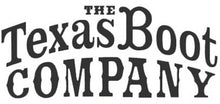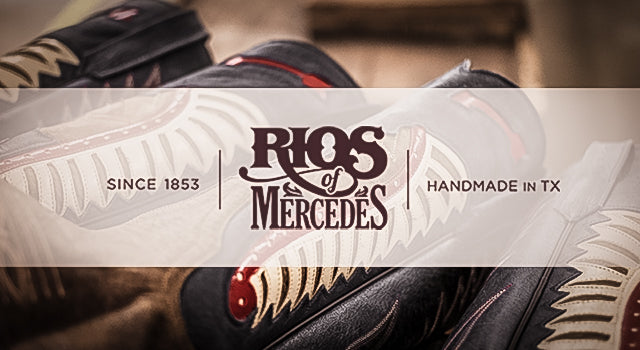A Passion for Boots…With Deep Roots

Most folks may not know Rios of Mercedes Boot Company is the oldest boot making operation in Texas, dating all the way back to 1853, but those that have put a foot into a Rios boot know the unmistakable feeling of quality comes from somewhere. The modern era of the fabled company began in the early 70’s when Trainor Evans acquired the company and brought on Pat Moody as a partner to his operations. Trainor’s roots in the world of boots run deep, as he cut his teeth as a fancy stitching contractor for Sam Lucchese. Trainor certainly has a knack for the fine details and meticulous processes of making boots by hand, a process that yields a superior fit that can only be truly appreciated when you slip your foot into a pair. Today, the Rios family of Companies are led by Trainor, Pat, and Trainor’s Son-in-law, Ryan Vaughn. Ryan has helped chart a new direction, staying true to the company’s roots, but pushing the envelope with new exotic hides and processes for fresh designs, all the while staying true to the company’s roots – a commitment to a process that spares no expense to produce boots with a fit second to none.

Details Make the Difference: Channel Welts, Hand Lasting and Hand Pegging
The unique fit of an Anderson Bean Boot and a Rios boot is perfected by the lasting process. Hand lasting a boot is the process in which the upper is secured to the leather insole. The upper is wet with water, pulled over the last, and tacked securely. Once dry, the channel cut into the insole is opened and the leather welt is sewn to the leather vamp, vamp lining and box toe. A spring steel shank is placed under the arch and a leather sole is glued and stitched to the welt and insole. Then the Lemonwood pegs are inserted. It’s a physical process, requiring a skilled craftsman, and added time to produce each pair, but there are no shortcuts if you’re after a truly world-class fit.
After lasting, lemonwood pegs are carefully hammered into holes hand-punched into the leather. Lemonwood pegs are more malleable than metal, as they expand and contract with moisture at almost an identical rate as leather. This old world bootmaking method is much more effective than using a material like brass nails, which will not hold the outsole as it swells when exposed to moisture.
Hide Selection
Hides must be hand-selected by the Rios Craftsman to ensure a match. Different portions of the hide are used for different parts of the boot. The Rios and Anderson Bean boot makers are not worried about how many boots they can make out of a hide – they want to make the best boots out of each hide. It’s an extra detail that adds to a difference you can feel.
Material Spotlight
Nile Crocodile
Nile Crocodile differs from the more commonly used Caiman Crocodile in that it is much softer. It’s a softness you can feel, and you can see the difference, too. The Nile Crocs have less calcium in their hides than their Caiman cousins, do. The smoother surface means Nile Croc’s take on a shine easier than the Caimans. Rios farm raised Nile Crocodile hides come from Zimbabwe from tanneries that have been carefully selected for their attention to quality and detail.
Arapaima
Anderson Bean is famous for introducing new hides to the market. Perhaps no other hide has caught on like the ‘Big Bass’. The Big Bass boots are made from the Arapaima fish from the Amazon Basin or Brazil. These river monsters average 9 feet and length, and their thick hides make incredibly soft boots. “Big Bass will get more character as you wear it but I have yet to see it tear or wear through” according to Trainor.
Ostrich
As soft as Ostrich leather is, most folks don’t realize its also one of the more durable hides, but that’s exactly why Rios partner Pat Moody likes it. Ostrich is the only leather that is naturally impervious to barnyard acid (manure and urine) the pen riders in the panhandle prefer smooth ostrich to all other work leathers.












